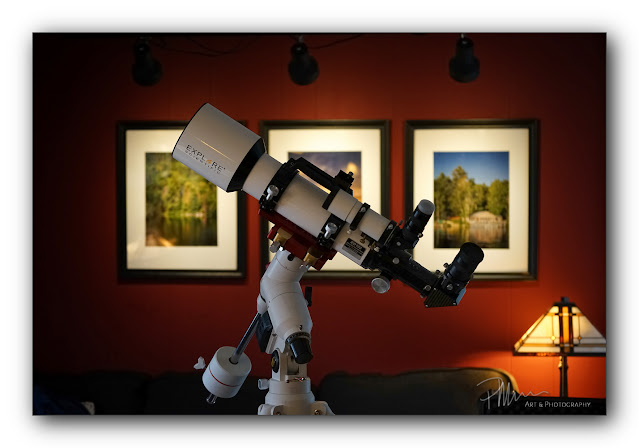Conjunction of Saturn and Jupiter - Planning and Preparation
We have a significant astronomical event fast approaching. On December 21st, Jupiter and Saturn will appear as one bright star in the sky because they will be lined up almost one behind the other. To the naked eye, they will likely appear as one. Through a telescope, they will be separated enough to get a nice photo of the two of them in the same frame. These two planets won't appear this close together in our sky again for another 60 years so I'm hoping the weather cooperates. Actually, I question whether the Earth will even support human life and an ecosystem as we know it 60 years from now, honestly. This conjunction of Jupiter and Saturn occurs every 20 years, approximately. Some are closer than others. This 2020 conjunction will show Jupiter and Saturn appearing closer than usual in our sky on the 21st.
Since this is a significant astronomical event, I've been planning and preparing. I've pulled out the appropriate astronomy gear and even assembled and disassembled this gear a few times in the living room while also running this equipment through its paces to ensure everything works correctly. I hope to also get to test this combination of gear outside before the event but the weather is not looking good for getting any practical trial runs in before this big event.
The photo below is a little graphic I put together to show the positions of our planets in our Milky Way (the starfield arcing on the left) on December 21st. The purple line is the line of sight from Earth to Jupiter and beyond to Saturn. The positioning of the planets in relation to the sun could be better for imaging but imaging them in this configuration should be doable.
This photo, below, shows the telescope and mount I intend to use for viewing and imaging this event (like everything else in life... different gear for different purposes). In this photo, the telescope is configured for viewing. For anyone interested, I'm using an Explore Scientific ED 102mm refractor telescope... a William Optics 50mm finder scope... an Explore Scientific EXOS2-GT mount... and, at the moment, I'm planning to use my Sony a6000 camera. I may change my mind later and switch to a dedicated astronomy camera but that would require the use of a computer and I'm hoping to avoid the need for a computer for this event and astronomy cameras require a computer for control and image storage.
The next photo shows the telescope configured for imaging with the Sony a6000 camera mounted straight-through at the back end of the telescope. Although... the Sony a6000 weighs less than some of my eyepieces so I could probably get away with imaging in the observing configuration.As I write this blog entry, I'm thinking it might be a wise idea to bring a small telescope along for the ride to use strictly for observing. I could mount a small but good telescope on a lightweight tripod. That might be a wise idea. It is more gear to lug around though. I guess we'll see how much energy I have that day.... more energy = more gear to lug around.
Other than the weather being the usual and likely environmental obstacle to viewing this event, I don't think we can view this event from our property because of trees. Jupiter and Saturn will be very low in the sky at dusk. We'll need to head someplace more suitable with a clear view to the south-southwest all afternoon and into dusk. At the moment, we are contemplating heading to a local park. Another option might be setting everything up at Sheila's parents' property. Ideally, I'd like to be on a mountaintop but considering the amount of gear I would need lug with me and especially considering my health, that is not an option. The fact that it is cold and snowy here doesn't help with good (or desirable) options either.
Realistically, the chances of the weather cooperating for this event in late December in Vermont are exceedingly slim. The last major astronomical event I planned to observe and image was completely hidden by clouds. That was when Mercury transited across the face of the sun as viewed from Earth. On the positive side, I watched the Mercury transit remotely through NASA's Solar Dynamics Laboratory as well as through a telescope in an observatory in the Canary Islands that provides remote access to astronomers. It is far more exciting viewing and imaging from your astronomy equipment though.
We'll see what happens in the coming weeks.



Comments
Post a Comment